The BAR: A Flawed Foundation?
April 14th, 2020
6 minute read
In the early part of the 20th century, the bloody killing fields in France and Belgium were chewing up an entire generation. War in the Industrial Age stole life on a scale previously unimagined. Amidst the fetid trench warfare that characterized that tortuous time, the world’s engineers strived to contrive tools to give their nation’s fighting men an edge on the battlefield.

John Moses Browning was the most gifted gun designer who ever drew breath. Born five years before the American Civil War, Browning held 128 firearms-related patents when finally he breathed his last in Liege, Belgium, in 1926. If we had any sense as a nation (we don’t), we would carve his likeness into a mountain someplace.
John Browning was particularly busy in the early part of the 20th century. He bodged up the 1911 pistol along with the M1917 belt-fed, water-cooled machinegun. Based upon specs purportedly crafted by Black Jack Pershing himself, he also designed the 12.7x99mm/.50 BMG round and the beastly M2 machinegun that fired it.

Though originally intended to defeat WW1-era balloons, variations of Browning’s inimitable Ma Deuce heavy machinegun eventually armed every American combat aircraft of WWII.
He also drew up plans for something radically fresh and new. He called this invention the Browning Machine Rifle.
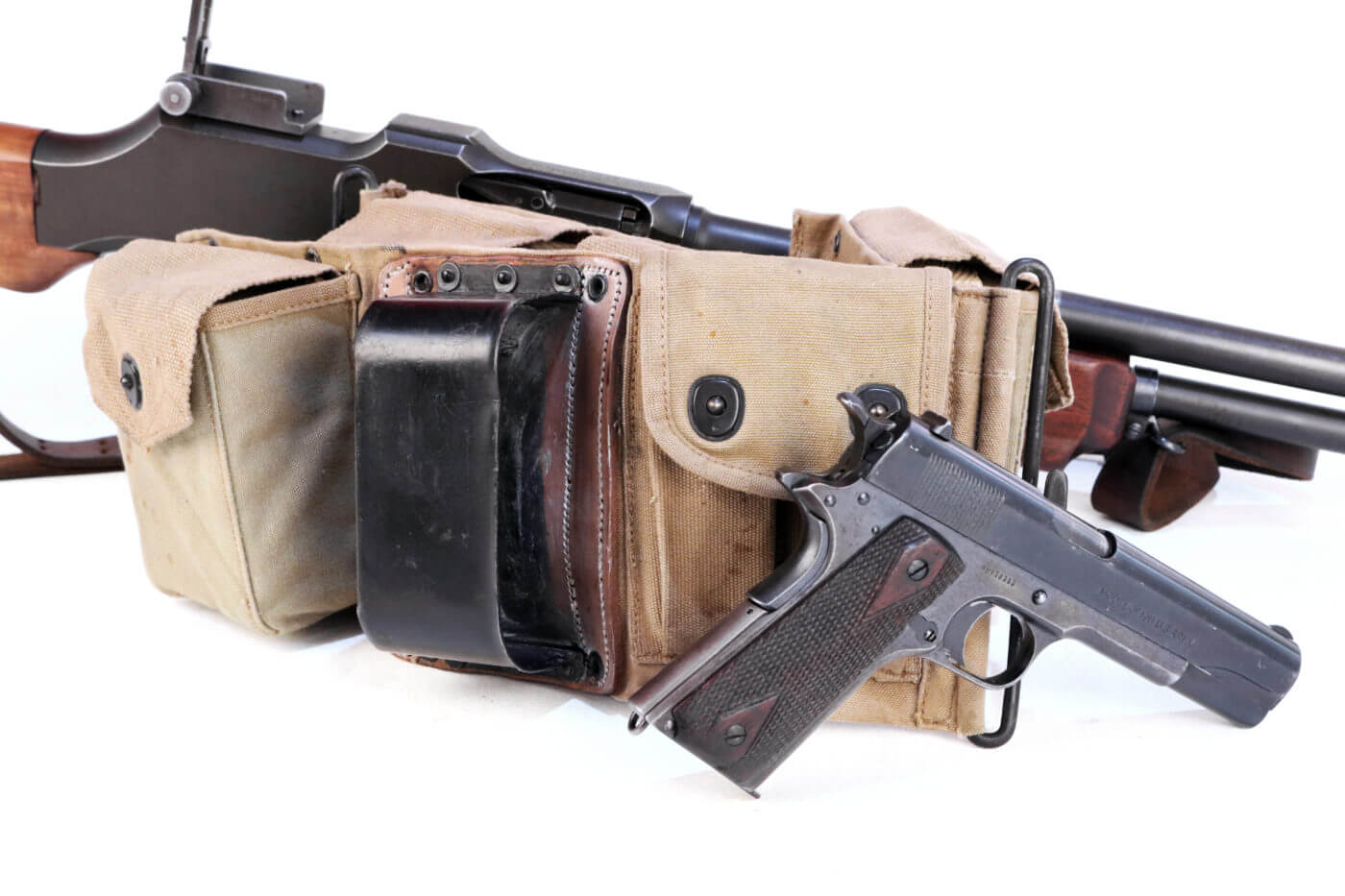
Was It a Mistake?
The Browning Machine Rifle was based upon a thoroughly discredited concept. Military planners felt that “walking fire” might be a good idea on the modern battlefield. In this hypothetical world, soldiers armed with repeating weapons would stand erect and stride purposefully toward enemy positions firing a round from the hip every time a certain foot hit the ground. Naturally, this idea arose with the French. It turned out that in the real world actual flesh and blood soldiers were none too keen to put this dubious tactic into practice. It did nonetheless still birth a most remarkable firearm.

Browning’s Machine Rifle was a monster of a thing that seemed better scaled to David’s Goliath than to normal folk. At 15.5 lbs. and nearly four feet long, the newly christened BAR (Browning Automatic Rifle) was a selective fire beast that fed from 20-round steel box magazines.
Cycling at around 550 rpm on full auto and firing from the open bolt, the BAR offered a quantum improvement over the bolt-action rifles of the day as well as such abominable light machinegun designs like the French Chauchat.
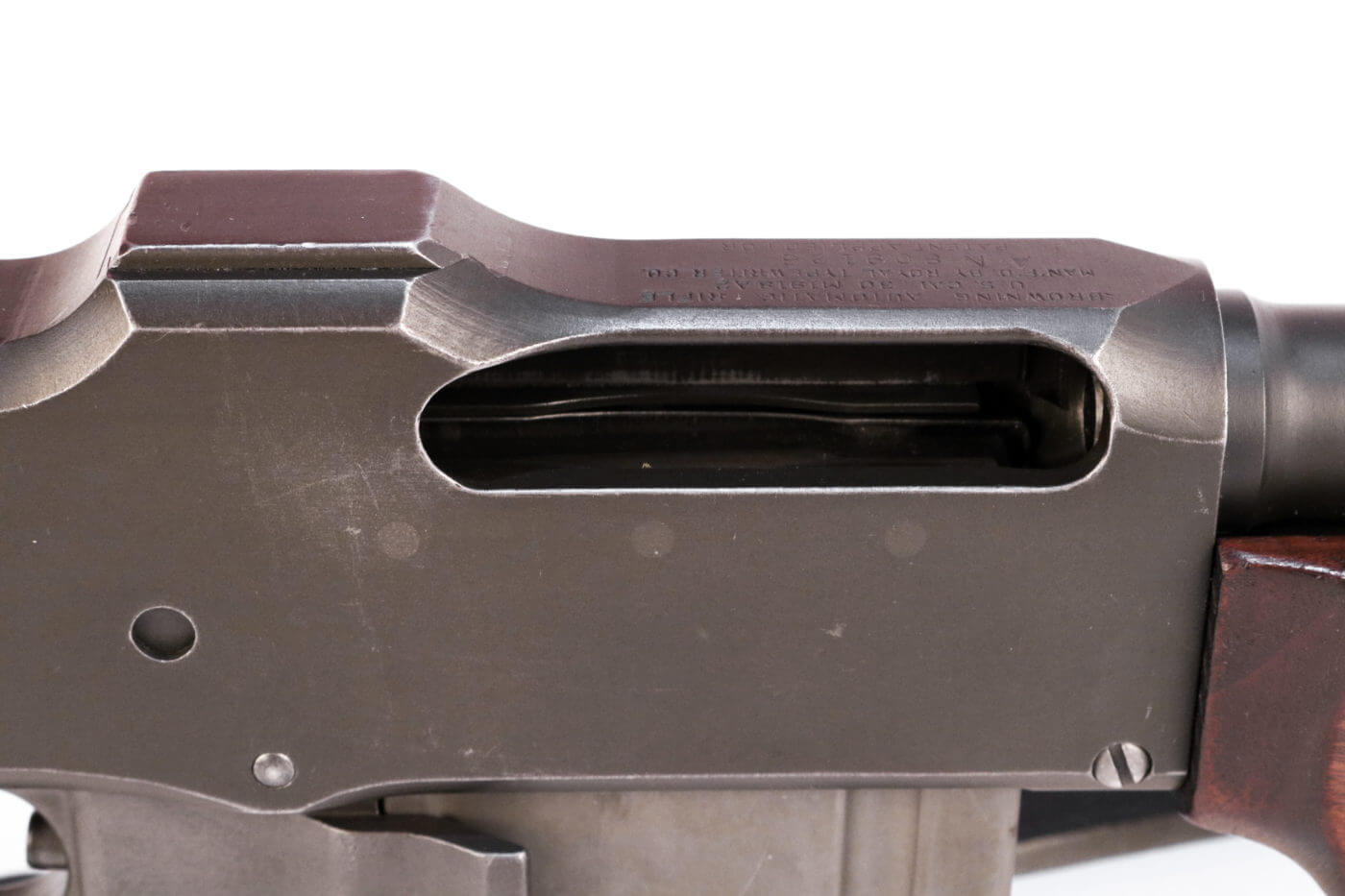
The web gear issued along with those early BAR’s included four double-magazine pouches, a pair of 1911 pouches and a fascinating tin cup scaled to accept the buttstock of the BAR. The theory was that a gunner might lodge the buttstock in this cup and run the gun from the hip as he strolled leisurely toward the Huns’ chattering Maxims. Subsequent WWII-vintage web gear just had six double-magazine pouches and eschewed the cup.
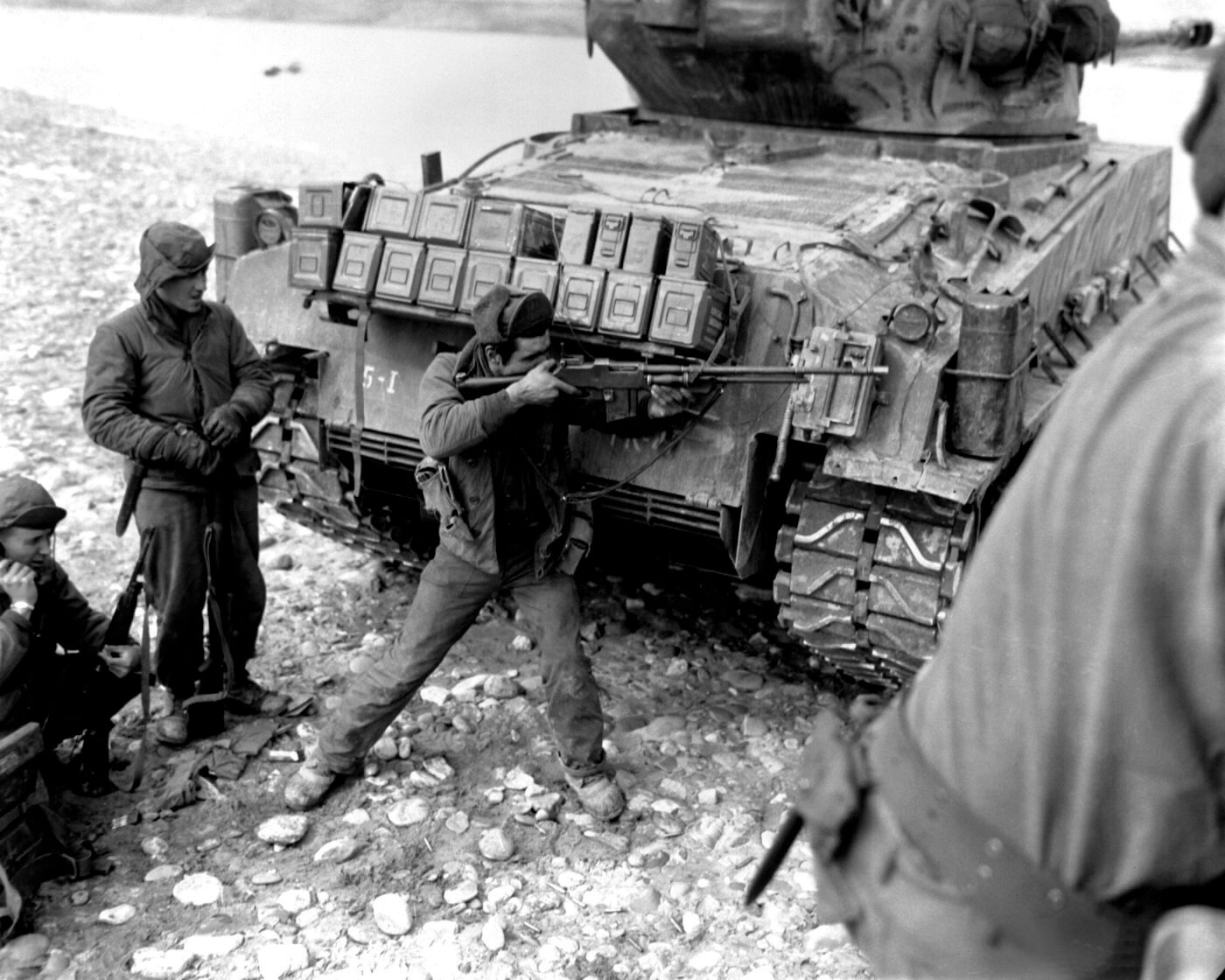
Generations
Some 43,000 early M1918 BARs were shipped to Europe by the end of WWI. Of those, 17,664 were issued to the American Expeditionary Forces, and 4,608 actually saw action. These were the variants that were later stolen by Clyde Barrow from National Guard armories and used on his reign of terror across the American heartland during the gangster era.
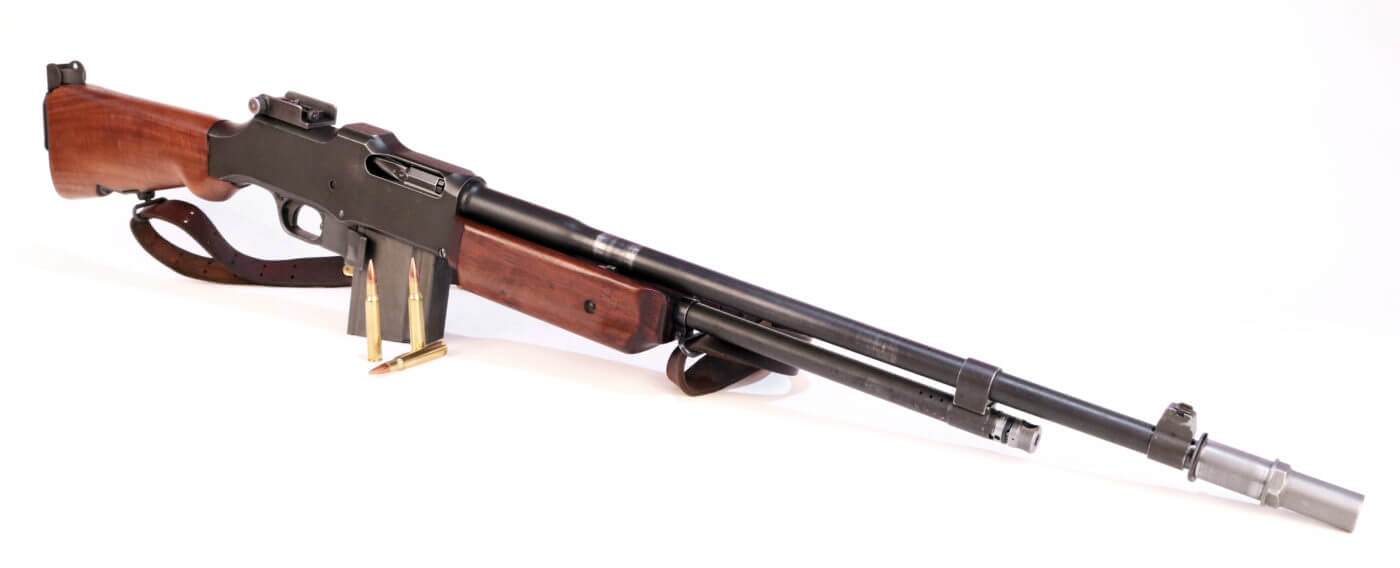
A modification dubbed the M1918A1 sort of fizzled, but by 1939 the basic BAR chassis had been upgraded to the M1918A2 standard. A great many earlier guns were arsenal rebuilt into the more modern configuration. A2 upgrades included a bulky folding bipod, a redesigned flash hider, reimagined furniture and fresh entrails. The new three-position selector offered safe, slow and fast options. The cyclic rate on slow was around 350 rpm, while the fast rate was about 550 rpm.
The demand for walnut for rifle stocks threatened to denude American forests, so Firestone Latex and Rubber developed a synthetic substitute for the M1918A2 BAR. These early composite buttstocks were molded from a fabric-reinforced plastic that rendered fine service. Most wartime BARs sported this sort of furniture.
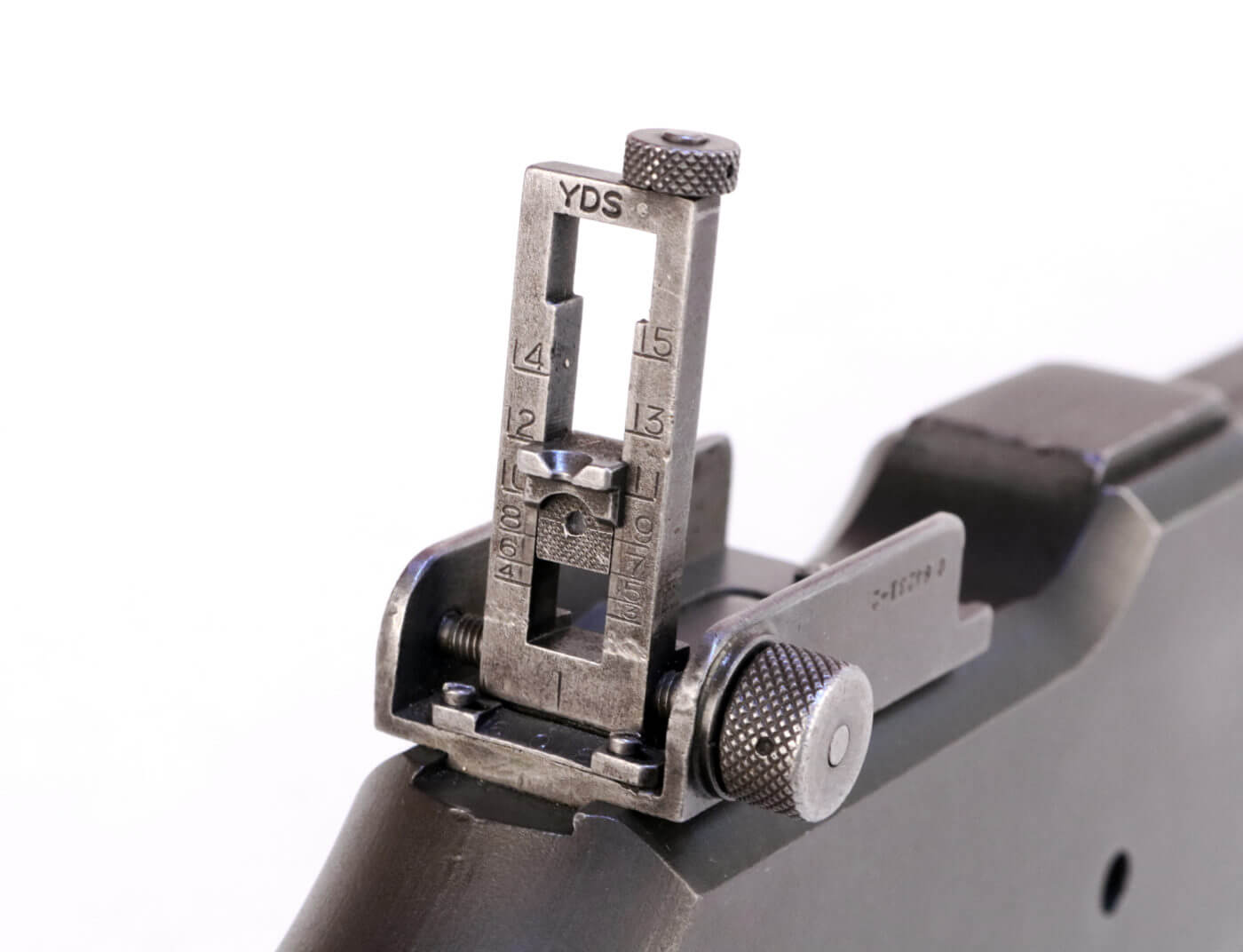
The M1918A2 ultimately weighed 20 lbs., a full 4.5 lbs. more than the original M1918. As a result, a great many BAR men in WWII removed their bipods, monopods and sometimes flash suppressors in an effort at cutting down weight. The carrying handle that affixes around the barrel was adopted very late in the war and didn’t really see service until Korea.
Practical Magic
The BAR is a massive bulky beast that fires a comparably massive 7.62x63mm/.30-06 round. I honestly cannot imagine humping this thing through a fifteen-mile forced march. The leather sling is fairly wide, but the gun remains just huge. I think perhaps those old guys were just tougher than we are today.
When fired from the prone off the bipod, the BAR is a surprisingly controllable beast. I love the slow rate of fire. On this setting, the disciplined trigger finger can readily conjure singles. Pivoting the switch forward to the “fast” setting renders the gun markedly spunkier. To push the fire selector back into the “safe” position requires that a little secondary detent be depressed.
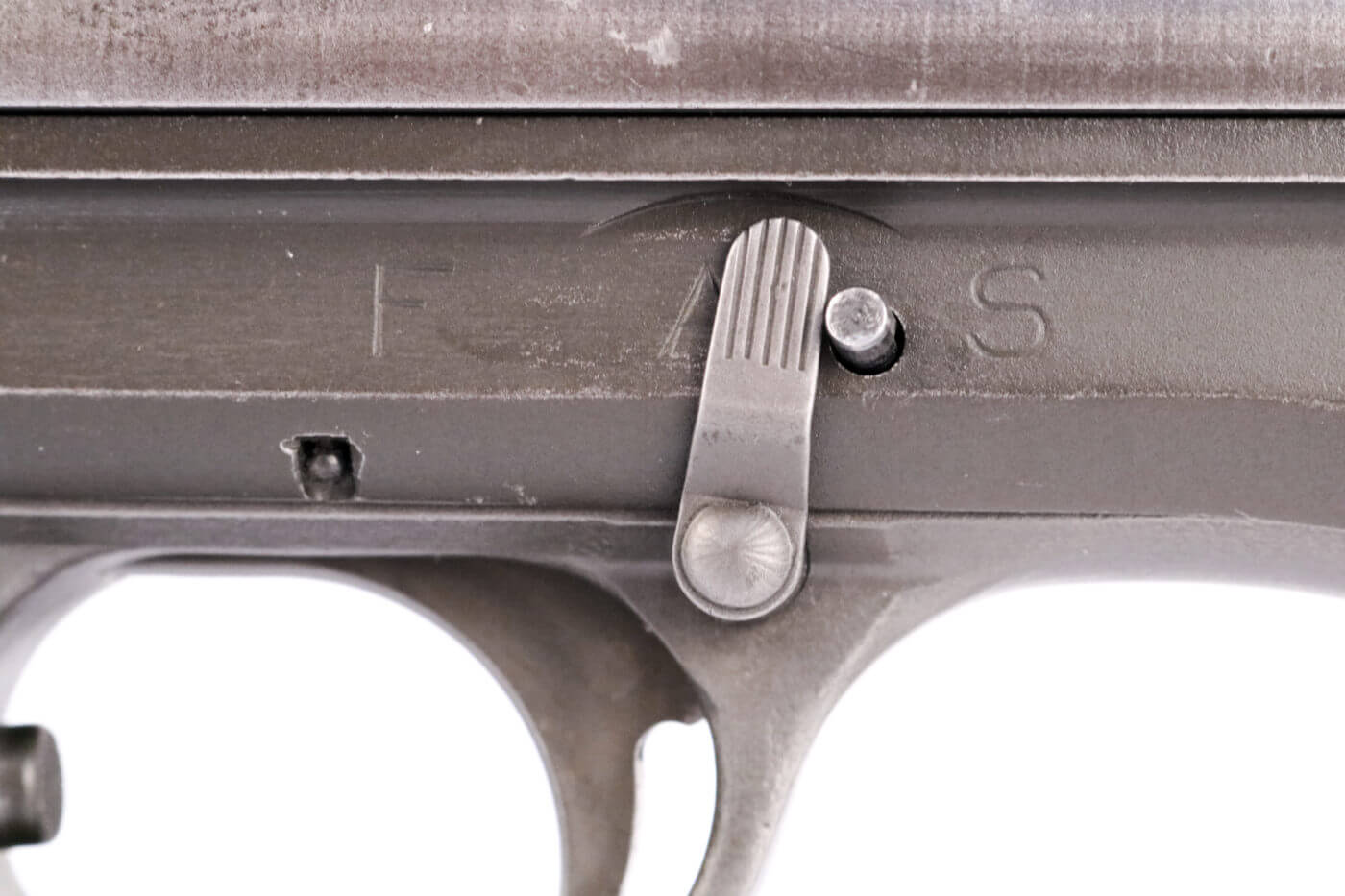
Firing offhand, the BAR is indeed a handful. However, the gun’s prodigious weight and sedate rate of fire conspire to keep the weapon controllable. I would not want anybody after me with one.
Denouement
The BAR was the center of mass for American squad-level combat. The gun was almost as maneuverable as the M1 rifles carried by the supporting riflemen while offering substantially greater firepower. The reassuring chatter of the BAR became the fixed point around which American infantry small unit operations orbited.

The BAR was much like the country that developed it. Big, loud, powerful and capable, the BAR was as tough as George Patton’s constitution and as reliable as the sunrise. American grunts used these massive guns to smite the Nazis and crush the Japanese. Through three wars, the BAR was the infantryman’s anchor. So, while the original purpose for it might have been misguided, it has proven itself many times over to be yet another example of John Moses Browning’s genius.
Editor’s Note: Please be sure to check out The Armory Life Forum, where you can comment about our daily articles, as well as just talk guns and gear. Click the “Go To Forum Thread” link below to jump in!
Join the Discussion
Continue Reading
Did you enjoy this article?

 289
289






